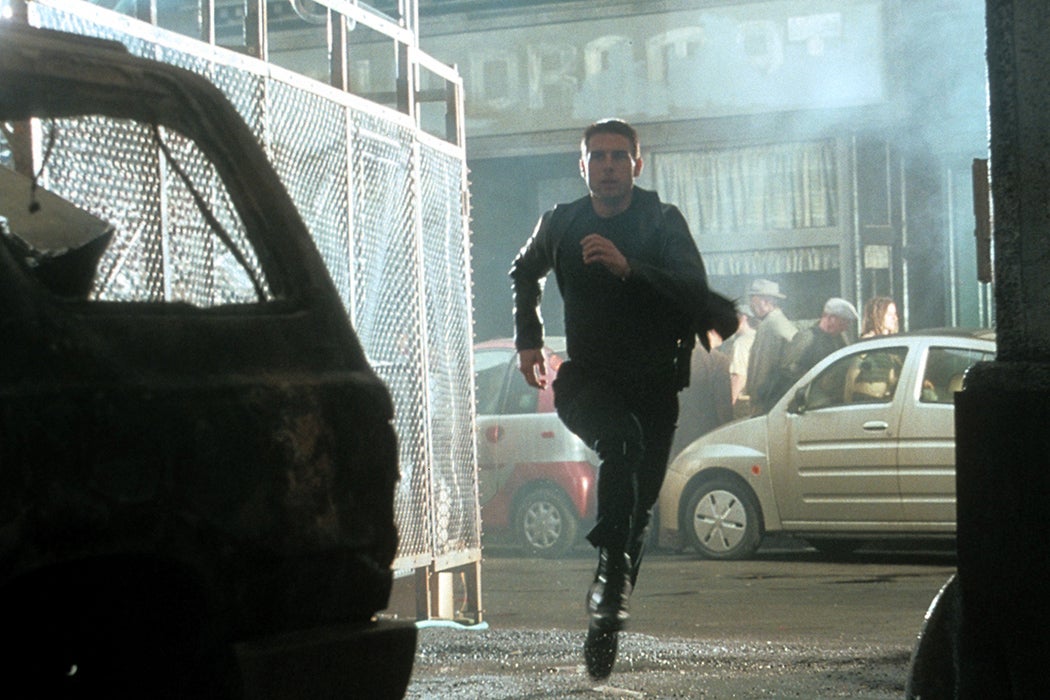Traditionally, the justice system attempts to capture and punish those responsible for crimes after the crimes have been committed. “Predictive policing” is the growing trend of using data to predict criminal activity in the future. Such profiling at the speed of software has also been used to forecast recidivism. It’s all extremely controversial, both for overturning the presumption of innocence and for manifesting stark racial bias.
The idea got a cultural jolt in the movie Minority Report (2002), which inspired the 2015 television series of the same name. Both were inspired by Philip K. Dick’s 1956 novella The Minority Report. In his dystopian fiction, Dick invented “precrime,” the clairvoyant foreknowledge of criminal activity as forecast by mutant “precogs.”
The roots of the dream of predicting crime are older than Dick. Cesare Lombroso (1835–1909), who may have coined the term criminology, believed that criminals were born that way, inheriting atavistically savage personalities and physiognomies. For Lombroso, criminals looked like criminals. Mugshots are an offshoot of his criminal anthropometry, the measurement of faces and bodies.
Historian of behavioral sciences Rebecca Lemov details another “episode in the history of PreCrime.” This was the attempt by the University of California, Los Angeles, to set up a center for the study of violence in the early 1970s.
The center was the brainchild of psychiatrist Louis Jolyon West, an expert on brainwashing. The Center for the Long-Term Study of Life-Threatening Behavior—which was also known as The Center for the Study and Reduction of Violence as well as the Violence Center—received funding from the state in 1972. Federal and private grants were promised for the future.
“From rats injected with LSD (would they fight more?) to violent veterans to junior high school students, the [proposed research projects] aimed at a ‘complete and integrated’ understanding of what causes aggression,” writes Lemov.
West called the potential of violence “dangerousness” and aimed to measure it. Lemov notes that “not only was the Center structured (innovatively for the time) around its data-gathering unit, the Center’s work was to re-think human functioning itself in terms of data.” Additionally, “the rich findings of these studies would allow the Center to compile stocks of behavioral data to understand crimes that had not yet occurred, but were ‘in formation.’” Governor Ronald Reagan touted the center his 1973 state-of-the-state message and things looked ready to go.
But, as Lemov details, West’s plans got tangled up with the heated controversy over “the now mostly forgotten ‘second wave’ of psychosurgery.” Psychosurgery was the faddish idea that brain surgery could be a form of behavioral modification. This frightened many. Forces ranging from the Black Panthers to the American Friends Service Committees to (Ralph) Nader’s Raiders stood firmly against the idea of using scalpels to sculpt behavior.
West said that no such surgeries were ever planned for the Center itself, but the fact that his first hire was the “nation’s eagerest booster of psychosurgery” only fed the controversy. Lemov wonders how, given the campus upheavals of the period, West and university administrators could be surprised by the vehement protest that resulted.
Lemov also stresses that it was the psychosurgery, not the comprehensive behavioral database, that was so controversial at the time. Philip K. Dick wasn’t on people’s minds. A Clockwork Orange—with its grim vision of behavioral-reconditioning—was. (Anthony Burgess’s 1962 novel was made into a movie directed by Stanley Kubrick in 1971.)
Weekly Newsletter
Protests were successful: UCLA’s Violence Center never even officially opened its doors. There was an irony in psychosurgery taking all the heat; that idea was on its way out, with federal funding for it drying up soon afterwards. But “West’s vision of a data-driven approach to identifying violent crime before it happened” turned out to be a model for the future.
Philip K. Dick’s original story is a nightmare that, in Lemov’s words, shows that “no matter how good your predictive information, you can’t toy with fate.” But in the movie and television versions, precogs were changed from floating “its” into movie stars and heroes. In the most recent iteration, the precog in the television series teams up with a cop to show that “data really can predict future crime.” Dick’s cautionary tale has been transformed into a policing fantasy.







